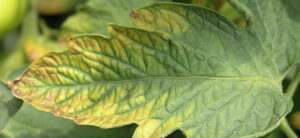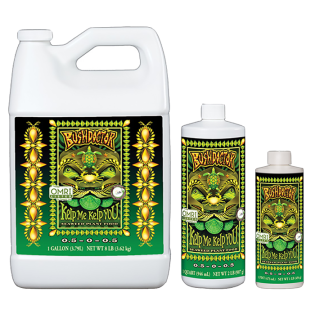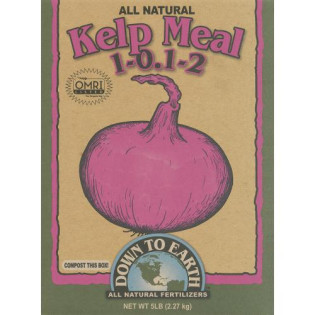
If you’re going to grow healthy, heavy plants, you need to understand the role of potassium for plants.
Potassium is one of 17 essential nutrients that plants need for growth, and life in general. It’s one of three major macronutrients along with nitrogen and phosphorus.
It can affect the shape, size, color, and vitality of your plants, but not all plants use potassium in the same way. In this article, we're going to cover everything you need to know about potassium for plants.
What Is The Importance Of Potassium For Plants?
Potassium serves various functions for plants. These functions vary depending on the type of plant and its stage of growth.
Potassium can improve root growth and drought tolerance, and it can also help with photosynthesis. It is vital for grain production, as it helps produce grains that are starchy and nutritious.
Potassium can also improve the amount of protein in plants and make them more resilient to water loss.
As a result, adequate potassium can prevent wilting. It can also prevent the spread of certain diseases and help make a plant more resistant to nematodes.
When Do Plants Use The Most Potassium?
Plants will absorb most of their potassium early on in their lives, especially when compared to the two other major macronutrients, nitrogen and phosphorus.
Up to 80% of a plant’s potassium needs are met within this time, in fact. This is partially because plants rely upon potassium to help them open and close their stomata, plant parts that are necessary for photosynthesis.
That’s not all potassium does, though. As the plant ages, potassium is needed to help develop and maintain the function of phloem, the tissue that moves sugars and other metabolic products from leaves, and the xylem, the tissue that moves nutrients and water from the roots to the leaves and shoots.
Without ample amounts of potassium, plants won’t be able to distribute nutrients properly.
Different Sources of Potassium for Plants
The amount of potassium in soil and other growing mediums that is available to plants can vary widely.
This is because potassium uptake is influenced heavily by root and soil interactions. In fact, in most natural environments, up to 95% of potassium is bound up in mineral soil and unavailable for a plant’s roots to access.
Of course, if you’re growing hydroponically, you’ll need to supply all of a plant’s potassium requirements, too.
There are several ways you can supplement potassium for your plants. Here are the most common in this day and age.
Compost
One of the easiest ways is to add compost to the soil, but this method won’t work in a hydroponic setup.
It’s also not ideal if your soil is overloaded with other nutrients, like nitrogen and phosphorus, because compost will naturally include high amounts of those, too.
The benefit of compost, though, is that it contains a water-soluble form of potassium so that it can reach your plants with ease.
Wood Ash
Wood ash is another popular source of potassium for plants. Hardwood ashes can be used directly as fertilizers or added to your compost pile for a subtle boost in the potassium levels.
It will raise soil pH too, so just make sure you test your soil and adjust accordingly.
Kelp Meal
Kelp meal can also be used, although it’s admittedly more difficult to find than wood ash.
It can be used in a liquid or dried form. Either way, it offers potassium in a quick-release format.
Greensand
Greensand is a mineral that is mined from former sea beds. This material is rich in a variety of minerals, most notably, potassium. Use it as a soil conditioner, in the compost, or as a direct fertilizer.
Potassium Chloride
Potassium chloride is another mined chemical, this one produced from ancient deposits.
You can purchase it commercially and use it directly on your plants. Try not to overuse this soil amendment, though, as it contains chlorine that can harm beneficial soil microbes.
Damage or kill off too many of those microbes, and you’ll find that your soil has a hard time getting reestablished.
Potassium Sulfate
A final option is potassium sulfate. Potassium sulfate is more expensive than potassium chloride, but as you might guess from the name alone, it doesn’t contain chlorine.
Therefore, it is generally considered safer to use. Those aren’t your only options when it comes to adding potassium to the garden, of course.
Granite Dust
Granite dust is another option. Although it’s slow to release minerals, making it a poor solution for a garden that needs potassium immediately, it is relatively inexpensive and will add moderate amounts of potassium over time.
Potassium Toxicity
Although plants can suffer from nitrogen and phosphorus toxicity, interestingly enough, potassium toxicity is exceedingly rare.
It is very difficult for plants to access too much potassium. While potassium toxicity usually won’t cause direct problems in plants, it can cause deficiencies in other nutrients, like calcium and magnesium.
Therefore, if you notice deficiencies of those two nutrients, you may want to test your soil or growing medium to make sure you aren’t overloaded with potassium, too.
Overfeeding potassium is unlikely, but again, it can block the absorption of other elements including magnesium, calcium, iron, and zinc.
If you suspect that you’re low in any of these nutrients, double check to make sure you aren’t too high in potassium.
If you are, you will need to flush your plants with water to help remove the excess - and probably supply supplemental magnesium, iron, calcium, or zinc, depending on your levels.
Identifying Potassium Deficiency In Plants
Potassium deficiency results in very stunted plant growth and yellow or purple tinted leaves. Older, lower leaves look wilted with browning and curling at leaf edges and yellowing between leaf veins and around leaf edges.
Left unchecked, older leaves will begin to die off and symptoms will progress to upper, younger leaves. Deficiencies leave the plant poor disease and infection resistance.
- Older, lower leaves will often yellow.
- Leaves curl under
- Young leaves will wrinkle and curl
- Necrosis will often be present at the leaf tips as well as spots on the leaf
- All growth will be stunted
- Stems may be soft, or in advanced deficiency, hard and brittle
Examples Of Potassium Deficiency
These two images are prime examples of Potassium deficiency. You can see the yellowing and curling of the leaves on the left. And on the right, you can see the necrosis and spotting.
How To Correct Potassium Deficiency
The best defense for potassium deficiency is to introduce simple ways to correct and prevent the deficiency in both soil and hydroponics.
Because large amounts of potassium are absorbed from the root system of the plant, this is where the majority of supplementation efforts and attention should be focused.
One of the first things to take a look at is pH balance, in both soil and hydroponic growing systems. A pH imbalance will block nutrient uptake through the plant’s roots. It is important to regularly check the pH, and to be sure to keep the pH within the appropriate range for soil or hydroponics.
The optimal pH range for most plants is between 5.5 and 6.5. In this range, the nutrients present in the soil or water are soluble, and are easily taken up through the plant’s root system.
When the pH level is outside of this range, even when the proper nutrients are present, they are not able to reach the plant. Deficiencies are compounded by acidic conditions and excess calcium and magnesium.
If pH levels are correct then we can examine other ways the deficiency can be remedied.
Alternatives for fixing a potassium deficiency
One of the ways is through the use of a high quality fertilizer containing potash. When incorporated into your feeding program, a potash fertilizer will deliver a much needed potassium boost, seen almost instantly.
Exercise some caution when applying potash as it's natural pH is normally above 10. Use a pH lowered mix or reduce the pH to around 6.5. Foliar feeding is not recommended in most circumstances.
Another method is concentrated kelp and seaweed treatments. Seaweed and kelp are both supplements that can provide high impact boosts of potassium and encourage healthy, productive growth. A liquid seaweed or kelp treatment can be used both at the root system and as a foliar spray in some cases.
Additionally, compost teas add abundant amounts of potassium to plants and are a great partner to seaweed and kelp supplements. The two can be mixed and used in a regimen that is capable of fixing a long list of deficiencies, including potassium.
How Do I Know Which Products Contain Enough Potassium?
The N-P-K numbers that are often displayed on the supplement will indicate the relative quantities of nitrogen, phosphorus, and potassium the product contains.
If you are searching for a potassium rich product, you will want the last number, or K number, to be larger than all the others. In the image to the right, the last 0 represents the potassium number.
If you aren't sure be sure to consult the product MSDS sheet to find out what it contains or contact our helpful experts for recommendations and tips.
Final Thoughts On Potassium For Plants
Now that you know all about the importance of potassium for plants, as well as the best sources, you can start feeding properly to avoid most deficiency and toxicity issues.
Should you encounter them anyway, we have the products and knowledge here at Hydrobuilder to help you restore the ideal nutrient ratio in your garden.
You can learn all about the different nutrient deficiencies here in our complete guide.

















